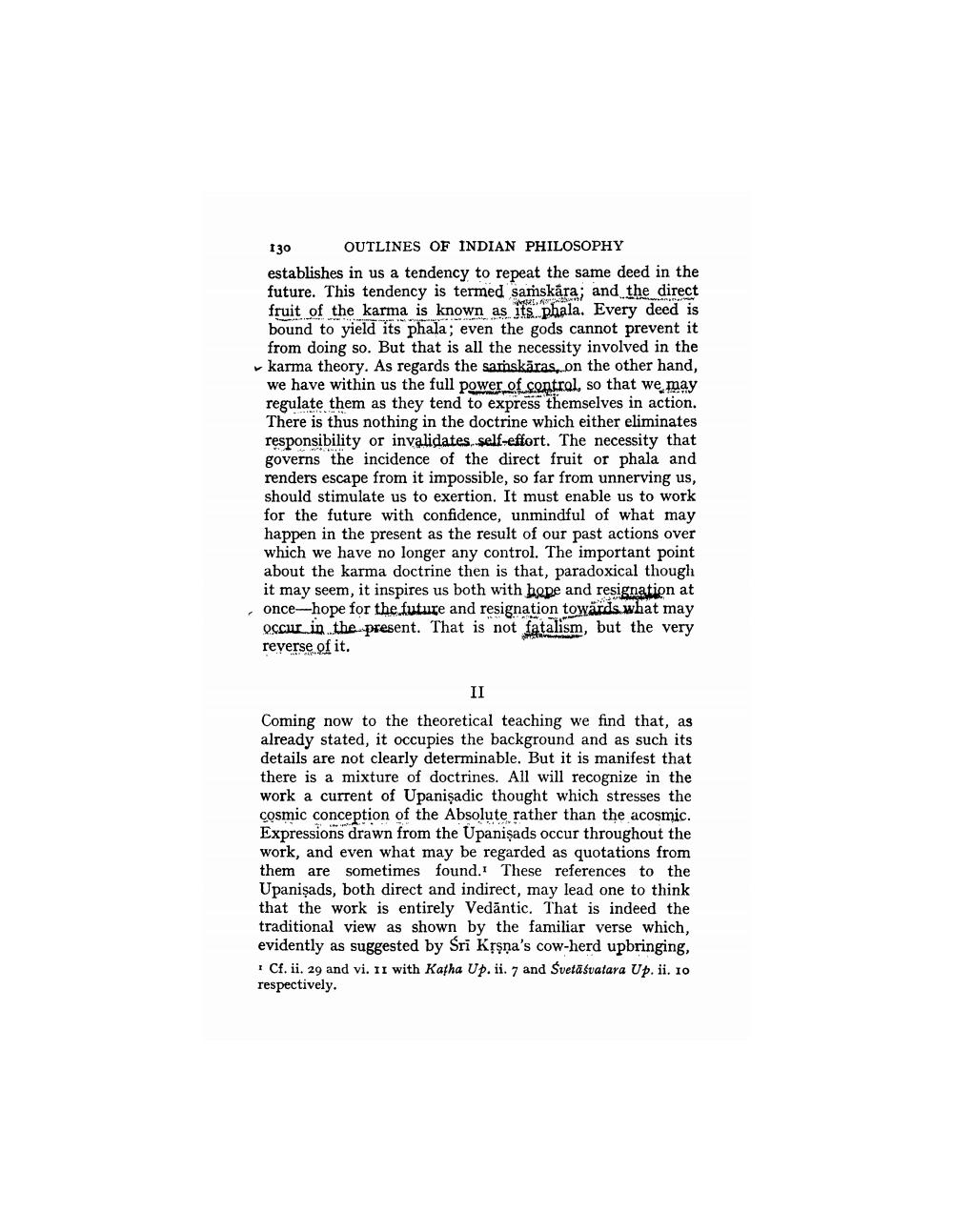________________
•
130
OUTLINES OF INDIAN PHILOSOPHY
establishes in us a tendency to repeat the same deed in the future. This tendency is termed samskara; and the direct fruit of the karma is known as its phala. Every deed is bound to yield its phala; even the gods cannot prevent it from doing so. But that is all the necessity involved in the karma theory. As regards the samskaras, on the other hand, we have within us the full power of control, so that we may regulate them as they tend to express themselves in action. There is thus nothing in the doctrine which either eliminates responsibility or invalidates self-effort. The necessity that governs the incidence of the direct fruit or phala and renders escape from it impossible, so far from unnerving us, should stimulate us to exertion. It must enable us to work for the future with confidence, unmindful of what may happen in the present as the result of our past actions over which we have no longer any control. The important point about the karma doctrine then is that, paradoxical though it may seem, it inspires us both with hope and resignation at once-hope for the future and resignation towards what may occur in the present. That is not fatalism, but the very reverse of it.
II
Coming now to the theoretical teaching we find that, as already stated, it occupies the background and as such its details are not clearly determinable. But it is manifest that there is a mixture of doctrines. All will recognize in the work a current of Upanisadic thought which stresses the cosmic conception of the Absolute rather than the acosmic. Expressions drawn from the Upanisads occur throughout the work, and even what may be regarded as quotations from them are sometimes found. These references to the Upanisads, both direct and indirect, may lead one to think that the work is entirely Vedantic. That is indeed the traditional view as shown by the familiar verse which, evidently as suggested by Sri Krspa's cow-herd upbringing, Cf. ii. 29 and vi. II with Katha Up. ii. 7 and Svetasvatara Up. ii. 10 respectively.




